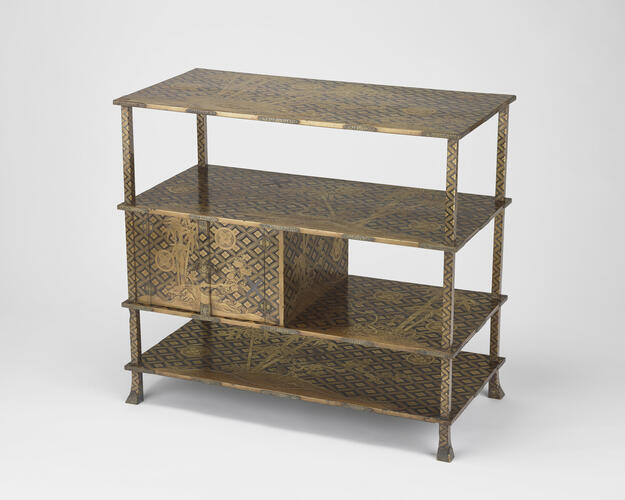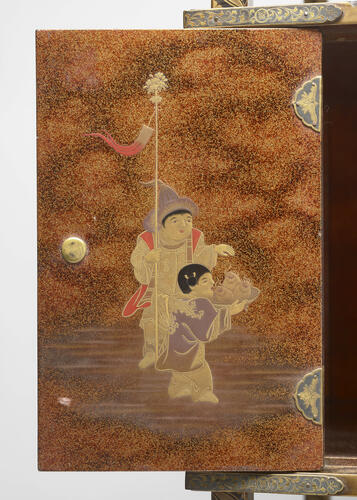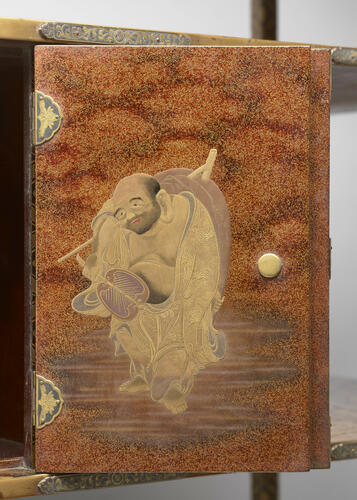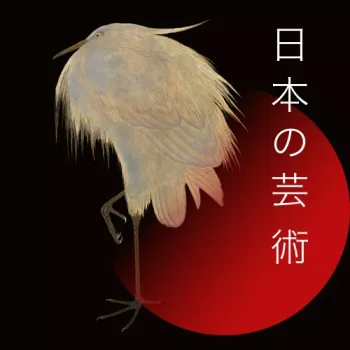Cabinet with shelves (kurodana) c. 1850 - 1869
Wood, black and gold lacquer | 71.0 x 78.0 x 38.0 cm (whole object) | RCIN 26050
-
Bamboo is the most prominent motif on this open-sided lacquer cabinet and matching box (RCIN 29452). The plant appears on almost every surface, rendered in gold takamakie (lacquer in high relief), growing among plum trees by rocks. It is an auspicious symbol since it can endure the severest weather. The stalks bend in the wind but do not break, signifying strength and resilience.
The stand is a kurodana, designed for the display of cosmetic boxes and personal effects, particularly equipment for tooth blackening (ōhaguro), which was a mark of feminine beauty. Originally it would have formed part of a matching set of three shelves known as a santana. Kurodana are distinguished from the other cabinets in the arrangement by their open sides, a single compartment on the second level from the bottom, the flat top shelf and slightly smaller size (about 70 cm high). The round box would originally have held a mirror.
In 1872 the box was exhibited at the South Kensington Museum as part of a loan exhibition of objects collected by Prince Alfred, Duke of Edinburgh during his five-year world tour aboard HMS Galatea. The cabinet must have been acquired at the same time: it bears the same design, including mon of crossed hawks’ feathers and crossed timbers, signifying the union of two families in marriage. A matching writing box is also in the Royal Collection (RCIN 29447.a–c). By the mid-nineteenth century, it was not uncommon for sandana and their accompanying accessories to be separated and sold or presented separately.
Text adapted from Japan: Courts and Culture (2020)Provenance
En suite with two circular boxes (RCIN 29452 and 29447) acquired by Prince Alfred, Duke of Edinburgh during his visit to Japan in 1869 and so probably also presented at that time.
Recorded in the Privy Purse Corridor at Buckingham Palace in 1911 (BP 1911 IX p.267).
From room 388, Buckingham Palace. -
Creator(s)
(nationality)Acquirer(s)
-
Medium and techniques
Wood, black and gold lacquer
Measurements
71.0 x 78.0 x 38.0 cm (whole object)
Category
Object type(s)













